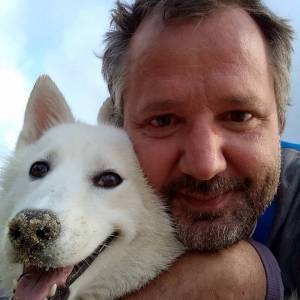Face(less)
1
During our trip to the Amazon in late April, my father didn't talk much. He seemed to simply enjoy the fact that we were having the opportunity to be together on a very special occasion - probably his last visit to Brazil. Only twice did we have brief conversations about his photography. The first time, when I suggested writing a book about his photography and mine, he simply said: "You can do whatever you like with my slides. They are yours." The second time, when I wanted to know something specific (I don't remember exactly what) about his approach to photography, he replied: "Don't ask me, ask the slides."
2
At first, I was a bit annoyed by his apparent refusal to talk about something that had been such an important part of his life. But then it began to make sense to me. The moment he gave me his photographs, they weren't his anymore. He had given them to me. And now it was up to me to study them and develop a dialogue with them if I wanted to know anything about them.
3
One of the exercises I'm doing in the context of my studies in light is converting some of the most iconic of my father's pictures into black and white images. I find it easier to concentrate on the play of light and shadows when there are no colors. I readily fall in love with them, and when that happens I find it impossible to abstract and reduce them to their degree of brightness or darkness.
4
One of the first things I noticed was that, in the pictures my Dad took of people he didn't know personally, their faces are very often almost invisible, completely or partially hidden either by an object or by dark shadows. I wondered why.
5
The pictures of people he knew always reveal their faces. He seems to have put a lot of effort into capturing their traces and expressions, into making them recognizable. Why didn't he do the same with those subjects he didn't know personally? Were they less important to him because he didn't know them?
6
Another aspect that caught my attention while comparing these with those of people he knew was that the latter are less elaborate from a photographic or artistic point of view. His primary concern of showing their faces forced him to avoid shadows and stark contrasts.
7
When photographing strangers, he was free to concentrate on other things and to resort to other means to portray them. I suspect it was because he didn't know them that he tried to find something other than their faces that allowed him to acknowledge them as the persons they were.
8
The silent, unspectacular beauty of these two images - main blip and extra - are a portrait of my father in prayer. It is the same beauty I experienced every night during our trip when, before wishing each other a good night, my Dad and I prayed together, sharing our thoughts with each other and with the One who is Light and Shadow.


Comments
Sign in or get an account to comment.


